![]()
|
William Ridgway
(& Co) |
Location and period of operation:
|
William Ridgway |
Shelton |
1830 |
1834 |
|
William Ridgway & Co |
Shelton |
1834 |
1854 |
|
Manufacturer of earthenware the Bell Works, Albion Street and Church Works, Hanley, Stoke-upon-Trent, England
|
Formerly: John & William Ridgway [1814-30]
Concurrently: William Ridgway, Son & Co [1841-48]
Also see: The Ridgway family of potters
 William Ridgway transfer plate in the Euphrates pattern |
Euphrates is the pattern name marks without '& Co'
indicates a date 1830-34 |
photos courtesy: Ruth Mackinnon
|
Most commonly produced in mulberry but also in black and dark green - there were variations in the pattern with greater detail and fuller borders. A complete range of dinner ware was made both in full and in miniature sizes.
|
 Opaque China WR Souvenir Some ware was not marked, especially the child's miniature sets.
|
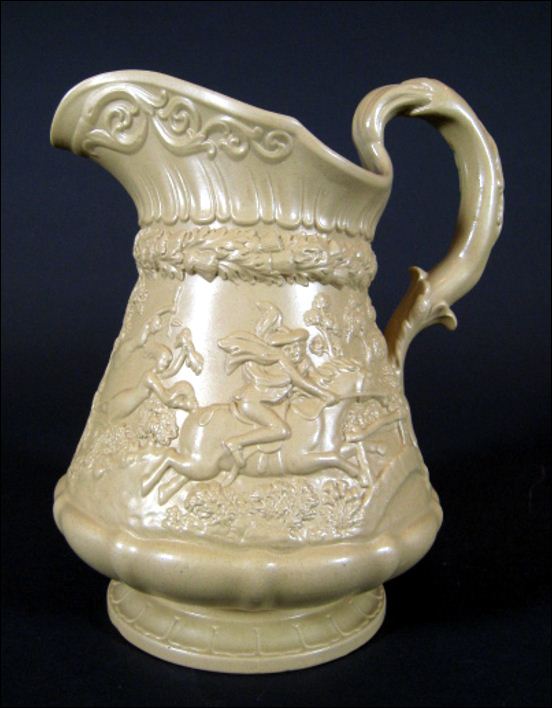 relief moulded stoneware jug dated October 1, 1835 |
impressed mark
|
|
The jug
is decorated with relief moulded designs and figures, |
similar style jugs were also made by William Ridgway, Son & Co
 jug in light blue stoneware by William Ridgway with hand painted flowers and gilded accents
|
1834-54
|
Marmora pattern
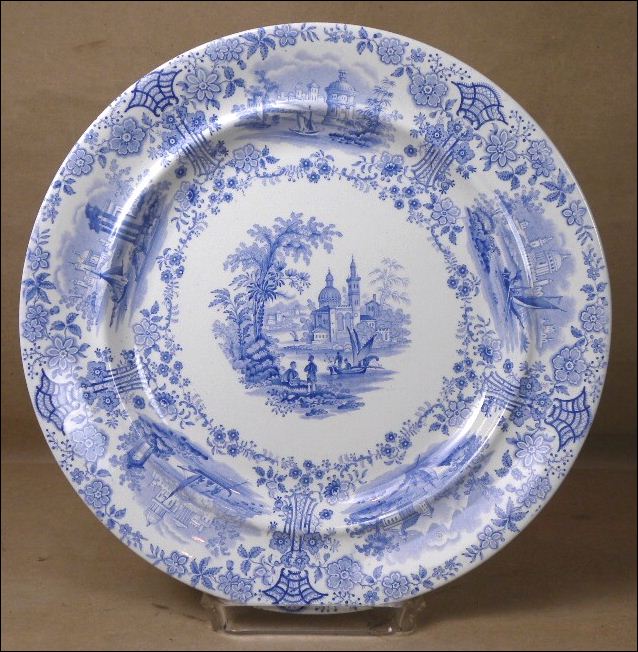 William Ridgway & Co plate in the Marmora pattern
|
a printed mark
with an urn and anchor the inclusion of '& Co'
indicates |
 Variation of the Marmora pattern with an expanded centre view |
|
photos courtesy: Dan Marz
|
|
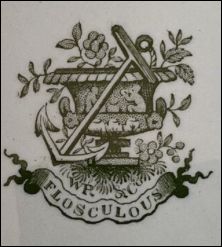 W R & Co FLOSCULOUS 1834-54
|
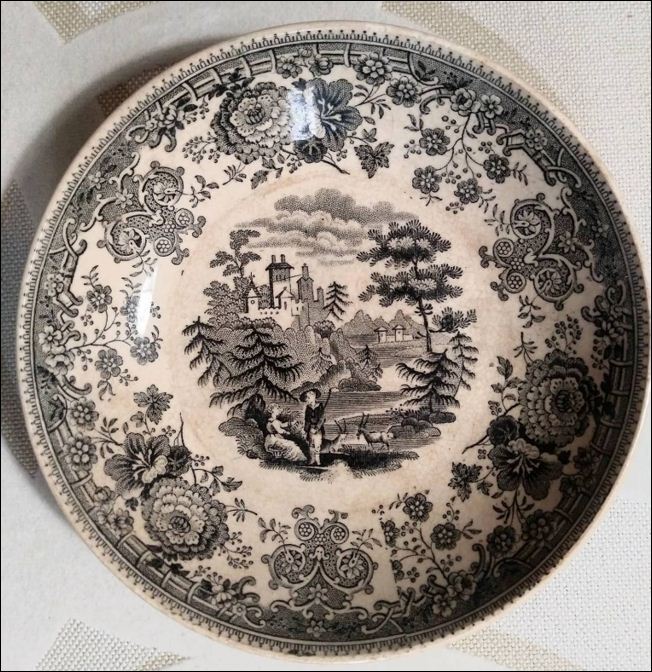 William Ridgway & Co plate in the Tyrolean pattern Tyrolean was a series of Alpine scenes
with mountains, |
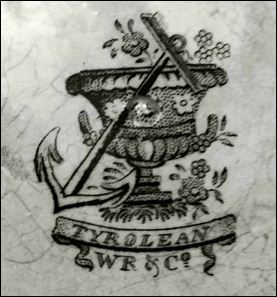 Tyrolean W R & Co 1834-54 |
Marks and Initials used on ware for identification:
W. R.
WILLIAM RIDGWAY
without '& Co'
indicates
a date 1830 - 34
W. R. & Co.
WILLIAM RIDGWAY & Co.
the inclusion of '& Co'
indicates
a date 1834-54
 W. Ridgway |
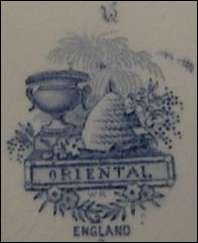 W R ENGLAND |
these marks without '& Co' indicates a date 1830-34
marks with W.R. & Co were produced in the 1834-1854 period
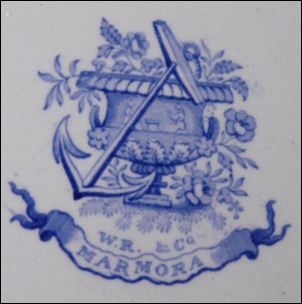
W R & Co
Marmora
a printed mark
with an urn and anchor
MARMORA is the pattern name
the inclusion of '& Co'
indicates
a date 1834-54
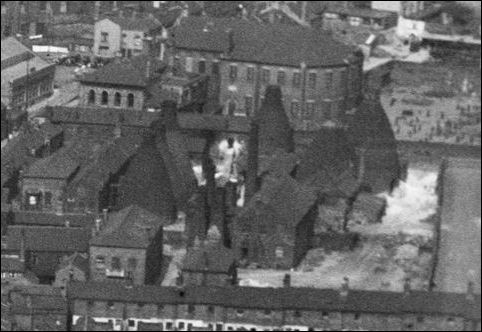
The Bell works
In
1830 the two brothers, John & William Ridgway,
inherited the Bell Works from their uncle
George.
John stayed at the Cauldon Works and William took the Bell Works.
- click for more on the Bell Works -
- click for more on the Church Works -
Reissued patterns
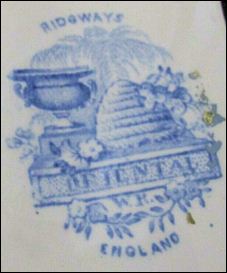 Ridgways W. R. England |
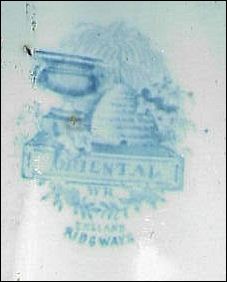 W. R. England Ridgways |
|
A number of patterns and printed marks were reissued at later periods by a subsequent company:- Ridgways at the Bedford Works.
|
|
Imported ware - passing off as William Ridgway & Co
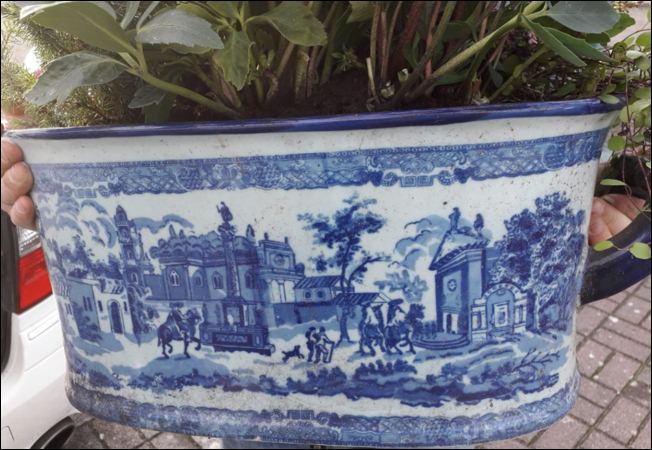
Although marked W R & Co - William Ridgway was
not known for making this type of ware
this a modern day import, probably from China
There was a company called ‘Staffordshire Figure Company Ltd’ who imported
this type of ware around the 1990’s
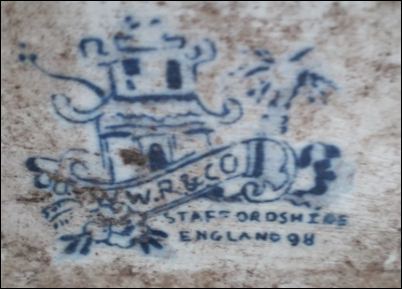
the drawing of the mark on the back is very poor
compared with a genuine Ridgway mark,
the lettering is unclear and the wrong style - also the ‘O’ in ‘& Co’
should be smaller than the other letters,
early Ridgway ware did not have ‘STAFFORDSHIRE’ in the mark - possibly the
’98’ is for 1998
Questions, comments, contributions? email: Steve Birks